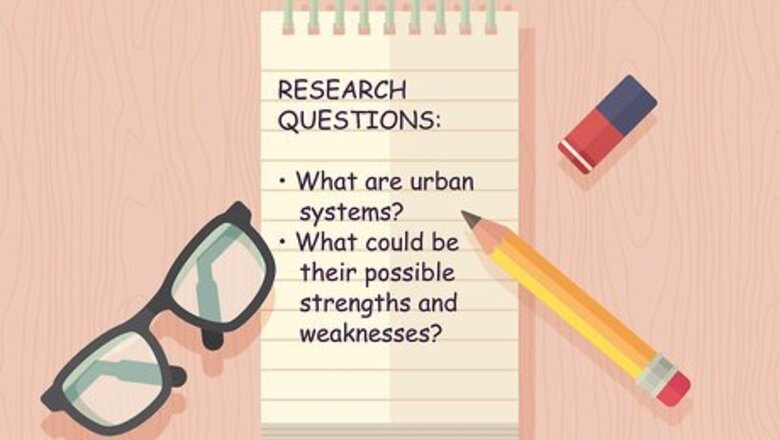
views
Collecting Data
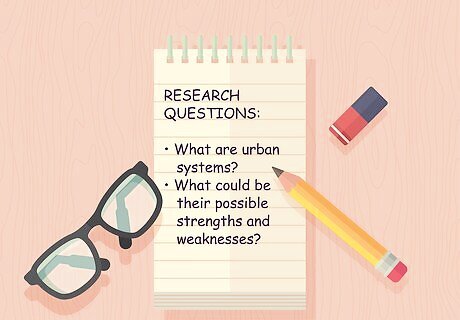
Identify the subject or research question. Your professor or supervisor may assign you a research question or subject, or you may be able to choose your own. The subject or question should be very specific and focused. Consider the scope and the limitations of the investigation. For example, the question could be, “What factors contribute to landslides?” or “What is a volcanic eruption?” Alternatively, you could investigate whether the mean population density of land-locked states is lower than the mean population density of the world.

Develop strategies for answering the question or exploring the subject. Do you simply need to compare data or will you need to work in the field? Figure out how to collect the data you’ll need and make arrangements to do so. For instance, you may need to study the ecology of several locations that are prone to landslides.

Obtain the information you need. You should collect at least 2 kinds of information: primary (talking to researchers or interviews with eyewitnesses) and secondary (statistics, reports, and other published material). Always choose reliable sources for information. When investigating volcanoes, collect eyewitness statements to serve as primary information sources. A secondary source could be a report on volcanic lava composition.
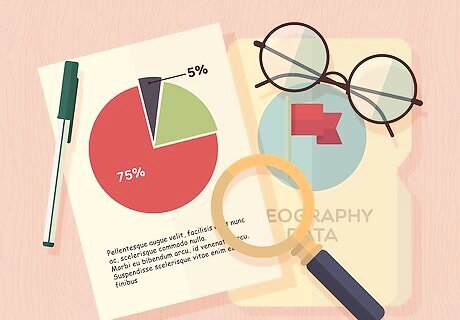
Analyze the data. Depending on your research, you may need to graph data or analyze statistics or observational notes. Evaluate what the data means in terms of your research question or subject. Is your question answered completely or your subject fully explored? Look for relationships, patterns, and trends between the issues and ideas you explored. For instance, your research may show that the mean population density for landlocked states is greater than the mean world population density.
Writing the Content

Begin each paragraph with a topic sentence. The first sentence of each paragraph should state what the paragraph is about. The subsequent sentences should explain the topic in more detail and provide evidence. In this way, you move from general to specific information. For example, a topic sentence could be, “Above average rainfall contributes to increased likelihood of landslides.” The subsequent sentences could discuss how much the likelihood is increased based on the amount of rain, and how this was determined.
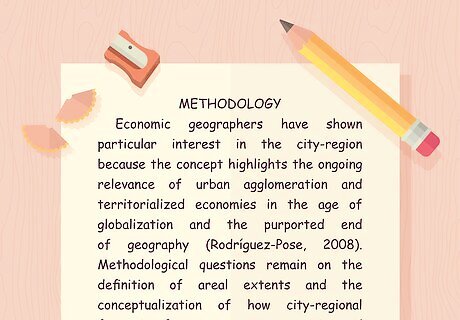
Detail your methodology and findings. Explain how you collected data and information for your investigation. List the methods used, like research or lab testing, as well as the sources, such as lab reports or interviews. Tell the audience what you observed or discovered and draw conclusions based on facts. For instance, you could write, “World population and landlocked state population density statistics were obtained from 2 sources. The mean population density was calculated for each set of data.” Then, detail the method used to find the mean density, state both mean densities, and compare them.

Provide accurate and specific evidence. Evidential support should be relevant and detailed. Statistics, lab reports, and mathematical conclusions are examples of good sources of evidence. For instance, if writing about volcanic eruptions, provide findings from a lab report that explain the composition of samples taken from a volcanic site or eruption.

Include relevant materials or media. You may have graphs, charts, or images that help explain your subject. If so, include them in the appendices and label them clearly. Don’t forget to discuss the materials in the text as well to explain their significance. Maps or photographs of the area may be particularly helpful for a geographical report. For example, include a photo of a landslide and list where and when it took place. Alternatively, add a link to video footage of a volcano.
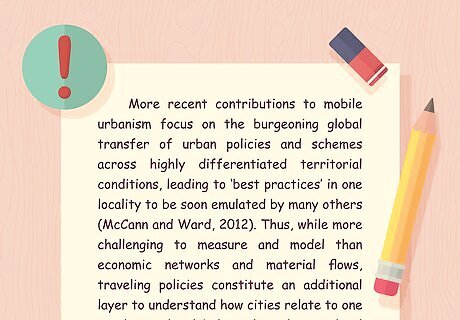
End with a strong conclusion. Restate the question or subject, then summarize the methods you used to answer the question or explore the subject. State your findings and discuss impacts or ramifications of your research. Use your conclusion to connect all the information you provided. For instance, list all the factors that contribute to a landslide. Discuss how landslides affect animal and human populations as well as their impact on the environment.
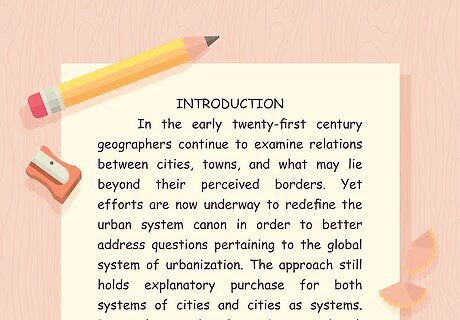
State your research question or subject in the introduction. You need to tell the readers what the paper is about, and why it matters, in the introduction. Explain how and where the study was carried out, and define any pertinent terms that the audience needs to know. Outline the structure of the report as well. For example, if writing about population density, define “landlocked states” and explain what units would be used to discuss population density (such as people per square mile). It’s actually better to write your introduction last, rather than first! That way you’ll be able to quickly outline what’s to follow.
Polishing the Report

Write in third person and keep things professional. Third person point of view means you take an objective approach to the report. You shouldn’t use words like “I,” “you,” or “we.” Avoid referencing yourself or the audience and don’t use slang. Stick to the facts and don’t include your personal opinions unless the guidelines for the report specifically ask you to. Instead of writing, “I discovered…” or “I used 3 data sources...” say “Findings showed...” or “Three data sources were used…”
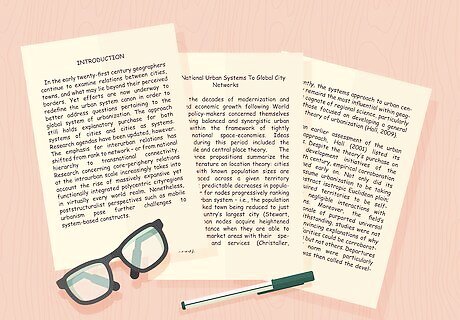
Ensure your paper is organized logically. Each paragraph should focus on 1 main idea and the paper should transition smoothly from 1 point to the next. The last sentence of each paragraph should segue the reader into the following paragraph. Play around with the organization of ideas until the paper flows smoothly from start to finish. For instance, the last sentence of the paragraph about rainfall and landslides could say, “Rainfall was especially impactful if the area lacked vegetation on the hillside.” The topic sentence of the next paragraph should then describe the relationship between amount of vegetation and frequency of landslides.
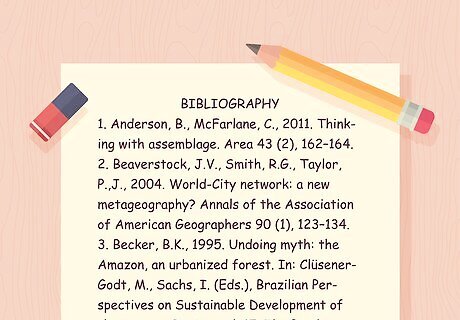
Cite your sources and include a bibliography. Cite the research sources you used as directed, whether by APA, MLA, or Chicago style. Don’t forget to include in-text citations as well!
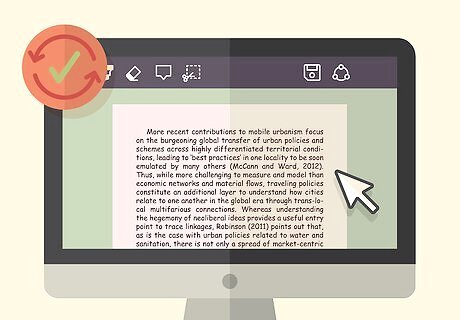
Proofread and edit carefully. Look for misspelled words and grammatical errors. Remove irrelevant information, opinions, assumptions, and anything that is unclear. Be sure to vary your sentence structure and word choice, and use appropriate technical terms where applicable.

















Comments
0 comment